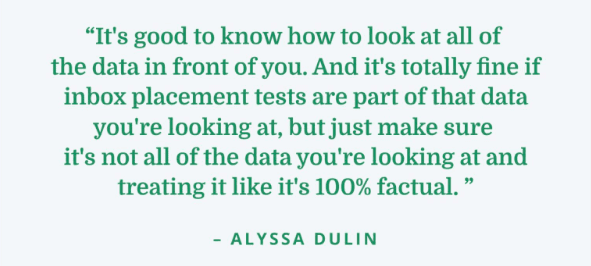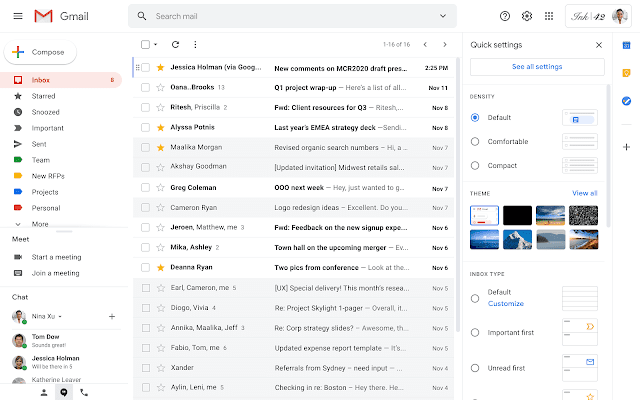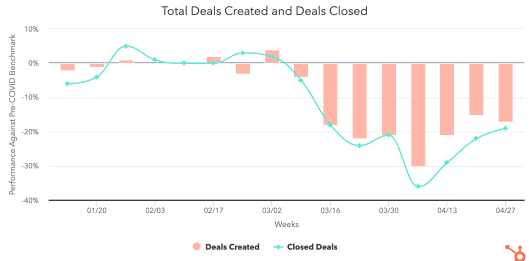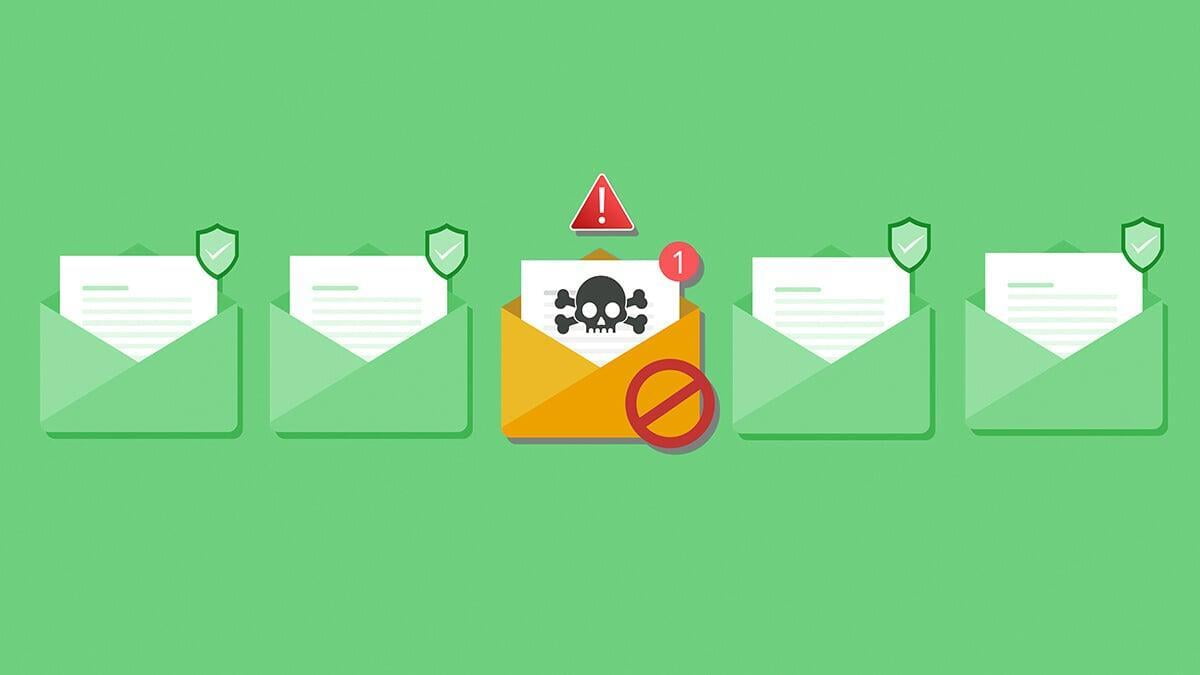
Pros and Cons of Inbox Placement Tests
Source : convertkit.com Date : 23 September, 2020
Inbox placement tests allow you to know whether your emails are being placed in the inbox, spam folder, or are missing for a list of test addresses. There are two ways to figure out where your email is landing with inbox placement tools

New quick settings help you optimize your Gmail layout
Source : gsuiteupdates.googleblog.com Date : 26 May, 2020

Deal Performance in April Yields Cautious Optimism for May``COVID-19 Benchmark Data``
Source : blog.hubspot.com Date : 07 May, 2020
The economic impact of COVID-19 is undeniable. Businesses all across the globe are learning how to adapt to these new circumstances and we’re all learning how to operate in a “new normal” that’s constantly changing.
That’s why we’ll be publishing week-over-week trend data for core business metrics like website traffic, email send and open rates, sales engagements, close rates and more. We hope to establish useful benchmarks to measure your business against, and serve as an early indicator of when short- or long-term adjustments may be needed in your strategy.
Mail Server IP Blacklist Removal Tips to Improve Email Deliverability
Source : linuxbabe.com Date : 05 May, 2020
Different Types of IP Blacklists
First, there’s internal blacklists and third-party blacklists. Many small and media-sized mailbox providers use third-party blacklists (Spamhaus, Barracuda, etc) because they don’t have the resource or time to build their own. Big mailbox providers like Gmail, Outlook, and GMX use their own internal blacklists. Actually, GMX uses both internal and third-party blacklists. Then, there’s single IP blacklists and whole IP range blacklists. It’s often very easy to request IP removal from single IP blacklists. It’s not that easy to get off a whole IP range blacklist. Luckily they are not commonly used.

How Sentiers Grows Its Newsletter Supported by Paying Subscribers
Source : reallygoodemails.com
What is a paid newsletter?
Many of us would be surprised to see a pop-up nowadays that asked us to pay for an email newsletter. With how rampant free newsletters are, paid newsletters are a weird new breed of emails, whose small but extremely loyal audiences run counter to the get-as-many-subscribers-as-humanly-possible methodology instilled in us.

Email Headers: What They Are & How To Read Them
Source : business2community.com Date : 21 April, 2020
Hands up if you’ve heard someone talk about email headers, but have no idea what that is. Or even worse, maybe your technical team has actually asked you to send them the full header of your email, and you’re frantically looking for it everywhere. In this post, we’re going to tell you about email headers, how they can help you and, of course, where exactly you can find them.
What is an email header?
Emails contain three main elements: the body, the envelope, and the header. You probably already know what the body of an email refers to — the main text of the message. Everything written in an email, from “Dear Professor Dumbledore” to “Sincerely Yours, Harry Potter,” is considered the body of the message. It can be seen by both the message’s sender and recipient.

6 Ways To Cash In On A Small Email List
Source : forbes.com Date : 18 April, 2020orbes.com Date : 18 April, 2020

Protecting businesses against cyber threats during COVID-19 and beyond
Source : cloud.google.com/blog Date : 17 April, 2020

What should you expect from a B2B marketing automation platform?
Source : martechtoday.com Date : 09 April, 2020
- Email marketing and landing page development;
- Lead management (i.e., capture, scoring and nurturing);
- Native CRM integration; and APIs or app marketplaces for faster martech system access.

When corporate communications smell phishy: Why customers don’t trust your emails
Source : portswigger.net Date : 08 April, 2020
There’s a fine line between customer engagement techniques and those deployed by fraudsters. Here’s how to avoid being caught in the spam net
We are constantly urged to stay vigilant to spam and malicious emails. Threat actors’ increasingly sophisticated tactics and mimicry of organizations poses a serious problem for businesses attempting to engage with their customers without appearing to be scammers.

3 Tricks for Getting More Email Clicks
Source : thehour.com Date : 06 April, 2020
The way people interact with your emails tells you everything about your marketing strategy. Are you sending valuable content? You’ll see the feedback reflected in your open and click rates. Is your email list accurate? Your bounce rates, spam complaints and other metrics will show you. If those numbers aren’t making you happy, it’s in your power to improve them. To see where you stand, let’s take a look at industry benchmarks. These vary depending on the source, so it’s difficult to establish what the most precise data is. Dave Chaffey of Smart Insights published an in-depth study on the topic, gathering information from several email-service providers. Here’s what he found after analyzing hundreds of millions of sends:

`{`Updated 3/31`}` What We See With Email Rates During COVID-19
Source : messagegears.com Date : 31 March, 2020
As we enter another week where the world is mostly under shelter-in-place orders due to COVID-19, we’re continuing to monitor delivery and engagement rates for email marketing sends. We wanted to know:
- How are brands communicating with users during the crisis?
- Are users more likely to interact with mailings now that many are sheltering in place?
- Are users more likely to unsubscribe from mailings?
Email continues to be a critical tool for enterprise brands during these uncertain times. For most industries, consumers are clicking and buying, and even in sectors like travel and hospitality where marketing has essentially been paused, email will be one of the most important channels in getting things ramped back up.
The bottom line: email is thriving right now as it is one of the few ways brands can reach their customers during the crisis.
Let’s look at what we’re seeing:

5 Email Marketing Trends That Can Make You More Efficient
Source : forbes.com Date : 15 March, 2020
1. It’s time to automate.